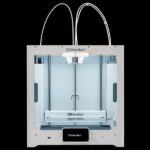Bumper cars, also known as dodging cars or dashing cars, are a classic amusement park ride that brings fun and laughter to people of all ages. These electrically powered cars, designed to be driven in an arena and collide with each other, might seem simple at first glance. However, a closer look reveals they are ingeniously engineered machines with several key components working in harmony to deliver a thrilling and safe experience. Understanding the Parts Of A Bumper Car not only enhances our appreciation for this beloved ride but also sheds light on the mechanics behind the amusement. Let’s delve into the essential parts that make up a bumper car.
The Foundation: Chassis and Frame
The chassis, or frame, is the backbone of any bumper car. This robust structure, typically made of steel, provides the foundational strength and rigidity necessary to withstand the constant impacts and stresses of bumper car operation. It’s designed to protect the car’s components and the rider during collisions. The frame integrates various mounting points for other parts, ensuring everything is securely fastened and aligned.
Protective Shell: The Body
Sitting atop the chassis is the body of the bumper car, often made from durable plastic or fiberglass. This body serves multiple crucial functions. Firstly, it acts as a protective shield for the mechanical and electrical components housed within the car. Secondly, it provides a layer of safety for the rider, absorbing some of the impact during collisions. Thirdly, the body is the aesthetic face of the bumper car, often brightly colored and styled to enhance the fun and visual appeal of the ride.
Powering the Fun: Electric Motor
Bumper cars are electrically powered, and at the heart of their operation is the electric motor. This motor is responsible for driving the car’s wheels and providing the necessary momentum for movement and collisions. Typically, bumper cars use DC motors for their reliability and controllability. The power is delivered to the motor through a system that we’ll discuss shortly, allowing for variable speed and instant response which is key to the bumper car experience.
Rolling Along: Wheels and Tires
Bumper cars are equipped with wheels, usually four, though some designs might vary. These wheels are generally small and made of hard rubber or a similar durable material. Unlike car tires designed for grip and traction on roads, bumper car tires are designed to allow for easy sliding and maneuvering on the smooth metal floor of the bumper car arena. This controlled slippage is part of the fun, enabling the characteristic bumping and dodging.
Guiding the Chaos: Steering Mechanism
Steering a bumper car is intentionally simple, often involving a basic steering wheel connected to the front wheels. The steering mechanism is designed for straightforward operation, allowing riders of all ages to easily control the direction of the car. However, precision steering isn’t the goal; the focus is on fun collisions, so the steering is responsive enough for quick changes in direction but not overly complex.
The Power Source: Pole and Overhead Grid
A distinctive feature of bumper cars is their method of power delivery. Each car has a long pole extending upwards to make contact with an overhead grid or ceiling. This grid is electrified, and the pole acts as a conductor, drawing power down to the car’s electric motor. This system allows for free movement of the cars within the arena without the constraints of cables trailing on the floor, ensuring a continuous and safe power supply. The grid is usually divided into sections with opposite polarities to complete the electrical circuit through the car.
Safety First: The Rubber Bumper
The most defining feature of a bumper car, and the source of its name, is the large rubber bumper encircling the car. This bumper is crucial for safety and fun. Made of thick, durable rubber, it absorbs the impact of collisions, protecting both the car and the riders from damage or injury. The bumper allows for those exciting crashes without the risk of serious harm, making the ride enjoyable for everyone.
Rider’s Seat and Safety Restraints
Inside the body, bumper cars feature a seat for the rider, typically molded plastic or padded for comfort. Safety is paramount, so bumper cars are equipped with seat belts or safety lap bars to keep riders securely in place during the ride. These restraints are essential to prevent riders from being thrown around during collisions, further enhancing the safety aspect of this thrilling amusement.
Conclusion
From the robust chassis to the energy-delivering pole and the crucial rubber bumper, each part of a bumper car plays a vital role in creating the unique and enjoyable experience we know and love. Understanding these components gives us a deeper appreciation for the engineering and design that goes into making this seemingly simple yet endlessly entertaining ride a staple of amusement parks and carnivals worldwide. The next time you buckle into a bumper car, take a moment to consider the ingenious parts working together to provide a safe and exhilarating bumping adventure.

